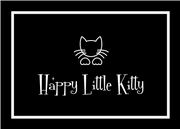Hard or Soft? The Debate Over Cat Food Continues
If you’ve ever had a cat, you know that there’s one big debate that just won’t go away: hard vs. soft cat food. Both have their advantages and disadvantages, so it can be a tough decision to make. Let’s take a look at both sides of the debate and try to come up with a conclusion on which is best for your furry friend.

Hard Cat Food
Hard cat food has been around since the 1950s and is still the most popular type of food among cats today. It comes in two forms: dry kibble or wet canned food. Dry kibble is the most common type of hard cat food and is usually composed of cereals, meat byproducts, vegetables, added vitamins, minerals and fat. Wet canned food typically contains more moisture than dry kibble and often includes some kind of gravy or sauce to make it more palatable for cats. In terms of cost-effectiveness, hard cat food usually has an edge over soft because you don't need to feed as much since it's calorie dense. However, hard cat food can cause dental issues in cats if they don't chew properly and can also be harder for older cats to digest due to its lack of moisture content.
Soft Cat Food
Soft cat food is becoming increasingly popular among pet owners who want their cats to eat something closer to what they would eat in the wild—namely moist chunks of real meat or fish mixed with gravy or sauce. This type of soft cat food usually comes in cans or pouches, although there are also freeze-dried versions available as well. Soft cat food tends to be higher in protein than hard cat food but not as calorie dense so you generally have to feed more per meal compared to dry kibble or wet canned foods. Additionally, this type of cat food can be more expensive than due to its higher moisture content.
As you can see, there are pros and cons associated with both types of cat food—hard vs soft—so when deciding which one is best for your beloved feline friend you should weigh all the options carefully before making a decision! Ultimately though, it will likely come down to personal preference as much as anything else since most cats seem equally happy eating either type of meal! So why not experiment a bit and see what works best for your individual furry family member? Happy feeding!
Related Articles:How to Make the Switch to a New Cat Food
How to Successfully Transition Your Cat's Food
How to Switch Up Your Cat's Food
Should Cats Have Constant Access to Food?
Feeding Time for Cats - Should it be Scheduled or on Demand?


Leave a comment